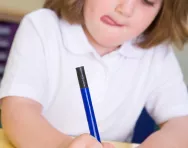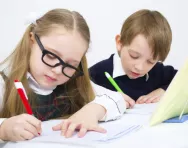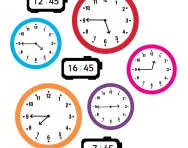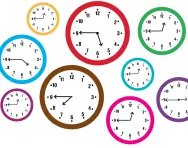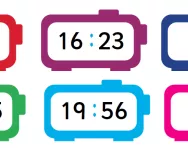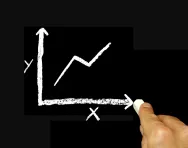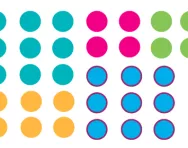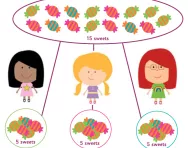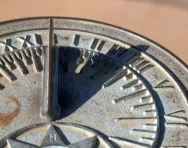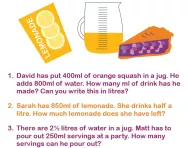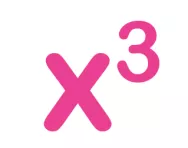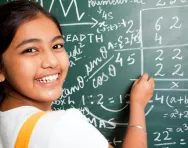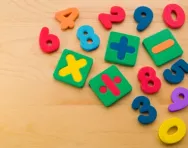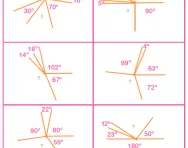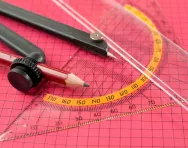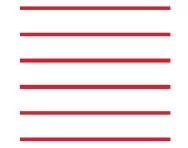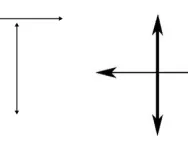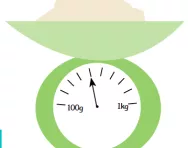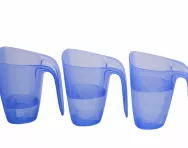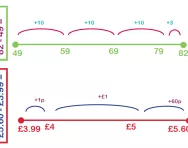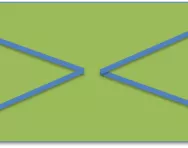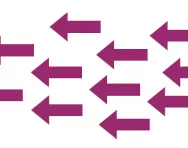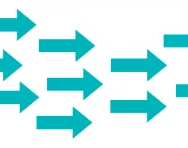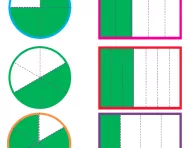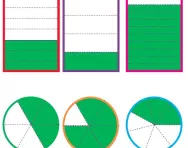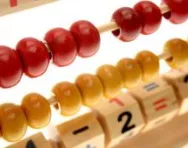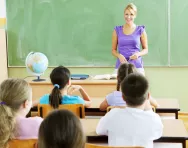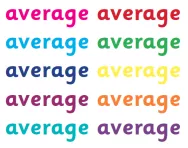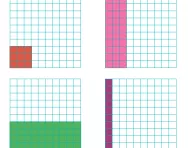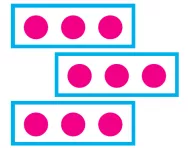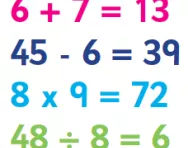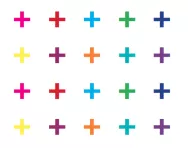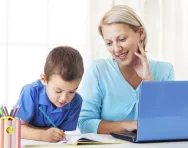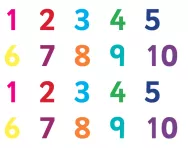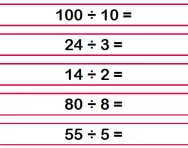What is expanded notation?
We explain what expanded notation means, how it is taught in primary school and how it can help children with addition and multiplication calculations.
What are mathematical investigations?
We explain what types of mathematical investigations children will carry out in primary school and give examples of complex investigations they might be asked to solve in KS2.
What are analogue and digital?
We explain what analogue and digital are and how and when children are taught to read clock faces and convert between analogue and digital times in primary school.
What are time intervals?
We explain what time intervals are and how children are taught to work out time intervals in KS1 and KS2 maths.
What are the 12-hour and 24-hour clock?
We explain how primary-school children are taught to use the 12-hour and 24-hour clock to tell the time on analogue and digital clocks, and how you can support their learning at home.
What are axes?
We explain what axes are and how your child will be taught to use axes on pictograms, bar charts and graphs.
What are arrays?
We explain what arrays are and give examples of how they can help children with their times tables learning and to explain the relationship between multiplication and division.
What is 'shared between'?
We explain what the term 'shared between' means and give examples of typical division problems your child might be set in KS1 and KS2.
What are clockwise and anti-clockwise?
We explain what clockwise and anti-clockwise means and give examples of typical exercises your primary-school child might be presented with to test their understanding of rotation.
What are two-step and multi-step problems?
We explain what two-step and multi-step problems are and give examples of typical problems a child might be asked to solve in primary school (and how the answer can be worked out!).
What are cube numbers?
We explain what cube numbers are and how the concept builds on prior knowledge of square numbers.
What are triangular numbers?
We explain what triangular numbers are and how able children in Year 5 or 6 might be taught to use algebraic formula to calculate a triangular number.
What are equations?
We explain what equations are and how children are taught to solve equations in KS1 and KS2, as well as how the topic of algebra is introduced.
What are odd and even numbers?
We explain what odd and even numbers are and how primary-school children are taught about this concept in KS1 and then have to apply this learning in KS2.
What are degrees?
We explain what degrees are and how children are taught to use protractors to measure angles, as well as reviewing the different knowledge children acquire about angles throughout KS1 and KS2.
What are right, acute, obtuse and reflex angles?
We explain what right, acute, obtuse and reflex angles are and how children are taught about different angles through KS1 and KS2.
What is horizontal?
We explain how primary-school children are taught to recognise horizontal lines in shapes.
What is vertical?
We explain how primary-school children are taught to recognise vertical lines in shapes, and what you can to to support your child's understanding at home.
What is parallel?
We explain what parallel means and how children are taught about shapes throughout KS1 and KS2.
What is perpendicular?
We explain what perpendicular means and how children are taught angles throughout KS1 and KS2.
What is diagonal?
We explain what diagonal means in geometry and why it is important that children understand this term when learning about 2D shapes in primary school.
What is mass?
We explain what mass means, how mass is usually measured and how children are taught to convert from one unit of mass to another.
How do you 'convert into the same units'?
We explain what the phrase 'convert into the same units' means, how children are taught to convert units of measurement and techniques that teachers use to help children master this skill.
What is 'the difference between'?
We explain what teachers mean when they talk about finding 'the difference between' and give examples of how children are taught to work out the answers to subtraction problems.
What is < and >?
We explain what the symbols < and > mean and give examples of how the concept is explained to primary-school children.
What is descending order?
We explain what descending order means and give examples of how the concept might relate to numbers, decimals, fractions or amounts of money.
What is ascending order?
We explain what ascending order means, how children are asked to sort into ascending order in primary school and give examples of how the concept might relate to numbers, dates, decimals or alphabetical lists.
What is the denominator?
We explain what the denominator of a fraction is and give examples of how the concept is taught in primary-school maths, as well as explaining fractions equivalence and the relationship between the numerator and denominator.
What is the numerator?
We explain what the numerator of a fraction is and give examples of how the concept might be taught in Key Stage 2, as well as explaining fractions equivalence and the relationship between the numerator and denominator.
What is the lowest common denominator?
We explain what the lowest common denominator is and how to find it and use it to compare different fractions, as well as giving examples of how the concept might be taught to your primary-school child.
What is the lowest common multiple?
We explain what the lowest common multiple is and give examples of how the concept might be taught to your primary school child.
What is the highest common factor?
We explain what the highest common factor is and give examples of how the concept might be taught to your primary school child.
What is the average?
We explain what the term average means in maths, how to find the average of a set of data (and how children are taught to do it in primary school), and what a mean average is.
What are decimals?
We explain what decimals are and how the concept is explained to primary-school children, as well as how they are taught to relate decimals to money and measurement, the equivalence between fractions and decimals, partitioning, rounding and ordering decimals and adding, subtracting, multiplying and dividing decimals.
What is repeated addition?
We explain what repeated addition means, how it is taught in school as a foundation of multiplication understanding and techniques that teachers use to help children grasp the concept.
What is a number sentence?
We explain what a number sentence is and how primary-school children are taught to write number sentences (or fill in gaps in number sentences) in KS1 and KS2.
What is a sum?
We explain what a sum is and how children are taught to understand the term when it appears in mental maths tests, word problems or investigations.
The beginner's guide to primary-school homework
How much homework should your child get in primary school, how often is it set, and what should you do if he’s getting too much – or none at all? We asked teachers for their insights on how to manage the home-school learning most effectively.
What is an integer?
We explain what an integer is and how to explain the concept to your child, as well as offering some puzzles involving the term 'integer'.
What are division facts?
We explain what division facts are, how they are taught in primary school, and share some fun games that you can try at home to make this knowledge stick.
